这一节我将跳过KNN分类器,因为KNN分类器分类时间效率太低,这一节讲Sparse autoencoder + softmax分类器。首先普及一下Sparse autoencoder网络,Sparse autoencoder可以看成一个3层神经网络,但是输入的数目和输出的个数相等。Sparse autoencoder的作用是提取特征,和PCA的功能有点类似,那么Sparse autoencoder是如何提取特征向量的呢?其实提取的特征就是隐含层的输出,首先来讲sparse autoencoder模型的图例如下:
我们去掉输出层以后,隐含层的值就是我们需要求的特征值,假如有n个输入,隐含层有m个神经元,输出层也为n,那么此网络有m个特征值,隐含层的每个神经元与输入层的连线构成了特征向量。那么我们去掉输出层,
下面分别讲Sparse autoencoder softmax分类器每一步:
第一步:Sparse autoencoder
神经网络分为前馈和后馈
前馈网络
一个神经网络是通过很多简单的神经元构成,下面是一个简单的神经网络。
后馈网络
softmax分类器第一节有讲,sparse autoencoder网络训练用的是SD法,softmax分类器训练用的L-BFGS,具体可以参见《最优化计算方法》板块。
实验与结果
还是以MNIST这个手写数字识别库为实验数据库,http://yann.lecun.com/exdb/mnist/
MNIST数字识别库的图片是28×28大小尺寸,假如隐含层有200个神经元,那么在sparse autoencoder网络中就含有(784+1)*(200)+(200+1)*784=314584个参数。那么原来的softmax分类器需要784*10=7840个参数,现在经过特征抽取后只需要200*10=2000个参数。可以提取出这些数据的权值,权值转换成图片显示如下:
(1)sparse autoencoder网络损失函数随着迭代次数的曲线
最后通过softmax分类器可以得到识别率为97.21%,比直接用softmax分类器分类识别率高,直接softmax分类器的识别率为92.67%。具体代码见资源!
sparseautoencoder_softmax.m
%% ======================================================================
% STEP 0: Here we provide the relevant parameters values that will
% allow your sparse autoencoder to get good filters; you do not need to
% change the parameters below.
inputSize = 28 * 28;
numLabels = 10;
hiddenSize = 200;
sparsityParam = 0.1; % desired average activation of the hidden units.
% (This was denoted by the Greek alphabet rho, which looks like a lower-case "p",
% in the lecture notes).
lambda = 3e-3; % weight decay parameter
beta = 3; % weight of sparsity penalty term
maxIter = 450;
numClasses = 10; % Number of classes (MNIST images fall into 10 classes)
lambda = 1e-4; % Weight decay parameter
itera_num=120;
Learningrate=0.6;
a=1;roi=0.5;c=0.6;m=10;
%% ======================================================================
% STEP 1: Load data from the MNIST database
%
% This loads our training and test data from the MNIST database files.
% We have sorted the data for you in this so that you will not have to
% change it.
% Load MNIST database files
images=loadMNISTImages('train-images.idx3-ubyte');
labels=loadMNISTLabels('train-labels.idx1-ubyte');
labels(labels==0) = 10;
%% ======================================================================
% STEP 2: Train the sparse autoencoder
% This trains the sparse autoencoder on the unlabeled training
% images.
% Randomly initialize the parameters
theta = initializeParameters(hiddenSize, inputSize);
%% sparseAutoencoder
W1 = reshape(theta(1:hiddenSize*inputSize), hiddenSize, inputSize);
W2 = reshape(theta(hiddenSize*inputSize+1:2*hiddenSize*inputSize), inputSize, hiddenSize);
b1 = theta(2*hiddenSize*inputSize+1:2*hiddenSize*inputSize+hiddenSize);
b2 = theta(2*hiddenSize*inputSize+hiddenSize+1:end);
% Cost and gradient variables (your code needs to compute these values).
% Here, we initialize them to zeros.
W1grad = zeros(size(W1));
W2grad = zeros(size(W2));
b1grad = zeros(size(b1));
b2grad = zeros(size(b2));
%%
Jcost = 0;%直接误差
Jweight = 0;%权值惩罚
Jsparse = 0;%稀疏性惩罚
[n m] = size(images);%m为样本的个数,n为样本的特征数
fprintf('%10s %10s','Iteration','cost','Accuracy');
fprintf('\n');
for i=1:maxIter
%前向算法计算各神经网络节点的线性组合值和active值
z2 = W1*images+repmat(b1,1,m);%注意这里一定要将b1向量复制扩展成m列的矩阵
a2 = sigmoid(z2);
z3 = W2*a2+repmat(b2,1,m);
a3 = sigmoid(z3);
% 计算预测产生的误差
Jcost = (0.5/m)*sum(sum((a3-images).^2));
%计算权值惩罚项
Jweight = (1/2)*(sum(sum(W1.^2))+sum(sum(W2.^2)));
%计算稀释性规则项
rho = (1/m).*sum(a2,2);%求出第一个隐含层的平均值向量
Jsparse = sum(sparsityParam.*log(sparsityParam./rho)+(1-sparsityParam).*log((1-sparsityParam)./(1-rho))); %损失函数的总表达式
cost(i) = Jcost+lambda*Jweight+beta*Jsparse;
%反向算法求出每个节点的误差值
d3 = -(images-a3).*sigmoidInv(z3);
sterm = beta*(-sparsityParam./rho+(1-sparsityParam)./(1-rho));%因为加入了稀疏规则项,所以
%计算偏导时需要引入该项
d2 = (W2'*d3+repmat(sterm,1,m)).*sigmoidInv(z2);
%计算W1grad
W1grad = W1grad+d2*images';
W1grad = (1/m)*W1grad+lambda*W1;
%计算W2grad
W2grad = W2grad+d3*a2';
W2grad = (1/m).*W2grad+lambda*W2;
%计算b1grad
b1grad = b1grad+sum(d2,2);
b1grad = (1/m)*b1grad;%注意b的偏导是一个向量,所以这里应该把每一行的值累加起来
%计算b2grad
b2grad = b2grad+sum(d3,2);
b2grad = (1/m)*b2grad;
W1=W1-Learningrate*W1grad;
W2=W2-Learningrate*W2grad;
b1=b1-Learningrate*b1grad;
b2=b2-Learningrate*b2grad;
fprintf('%5d %13.4e \n',i,cost(i));
end
%-------------------------------------------------------------------
display_network(W1');
figure
plot(0:499, cost(1:500),'r--','LineWidth', 2);
%================================================
%STEP 3: 训练Softmax分类器
activation = sigmoid(W1*images+repmat(b1,[1,size(images,2)]));
theta = 0.005 * randn(numClasses * hiddenSize, 1);%输入的是一个列向量
% Randomly initialise theta
theta = reshape(theta, numClasses, hiddenSize);%将输入的参数列向量变成一个矩阵
inputData = activation;
numCases = size(inputData, 2);%输入样本的个数
groundTruth = full(sparse(labels, 1:numCases, 1));%这里sparse是生成一个稀疏矩阵,该矩阵中的值都是第三个值1
%稀疏矩阵的小标由labels和1:numCases对应值构成
thetagrad = zeros(numClasses, hiddenSize);
p = weight(theta,inputData);
Jcost(1) = -1/numCases * groundTruth(:)' * log(p(:)) + lambda/2 * sum(theta(:) .^ 2);
thetagrad = -1/numCases * (groundTruth - p) * inputData' + lambda * theta;
B=eye(numClasses);
H=-inv(B);
d1=H*thetagrad;
theta_new=theta+a*d1;
theta_old=theta;
fprintf('%10s %10s %15s %15s %15s','Iteration','cost','Accuracy');
fprintf('\n');
%% Training
for i=2:itera_num %计算出某个学习速率alpha下迭代itera_num次数后的参数
a=1;
theta_new=reshape(theta_new, numClasses,hiddenSize);
theta_old=reshape(theta_old,numClasses,hiddenSize);
p=weight(theta_new,inputData);
Mp=weight(theta_old,inputData);
Jcost(i)=-1/numCases * groundTruth(:)' * log(p(:)) + lambda/2 * sum(theta_new(:) .^ 2);
thetagrad_new = -1/numCases * (groundTruth - p) * inputData' + lambda * theta_new;
thetagrad_old = -1/numCases * (groundTruth - Mp) * inputData' + lambda * theta_old;
thetagrad_new=reshape(thetagrad_new,numClasses*hiddenSize,1);
thetagrad_old=reshape(thetagrad_old,numClasses*hiddenSize,1);
theta_new=reshape(theta_new,numClasses*hiddenSize,1);
theta_old=reshape(theta_old,numClasses*hiddenSize,1);
M(:,i-1)=thetagrad_new-thetagrad_old;
BB(:,i-1)=theta_new-theta_old;
roiJ(i-1)=1/(M(:,i-1)'*BB(:,i-1));
gamma=(BB(:,i-1)'*M(:,i-1))/(M(:,i-1)'*M(:,i-1));
HK=gamma*eye(hiddenSize*numClasses);
r=lbfgsloop(i,m,HK,BB,M,roiJ,thetagrad_new);
d=-r;
d=reshape(d,numClasses,hiddenSize);
theta_new=reshape(theta_new,numClasses,hiddenSize);
theta_old=theta_new;
theta_new = theta_new + a*d;
%% test the accuracy
fprintf('%5d %13.4e \n',i,Jcost(i));
end
plot(0:119, Jcost(1:120),'r-o','LineWidth', 2);
testData = loadMNISTImages('t10k-images.idx3-ubyte');
labels1 = loadMNISTLabels('t10k-labels.idx1-ubyte');
labels1(labels1==0) = 10;
test = sigmoid(W1*testData+repmat(b1,[1,size(testData,2)]));
inputDatatest = test;
pred = zeros(1, size(inputDatatest, 2));
[nop,pred]=max(theta_new*inputDatatest);
acc = mean(labels1(:) == pred(:));
acc=acc * 100
========================================================================================
第三节:从自我学习到深层网络学习
========================================================================================
怀柔风光








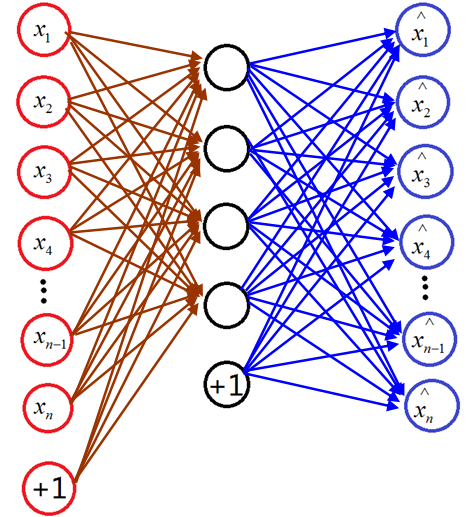
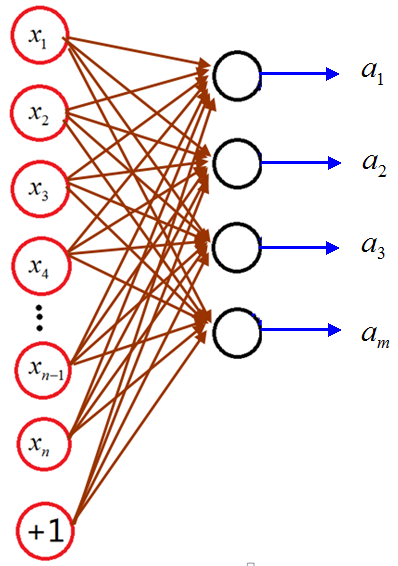
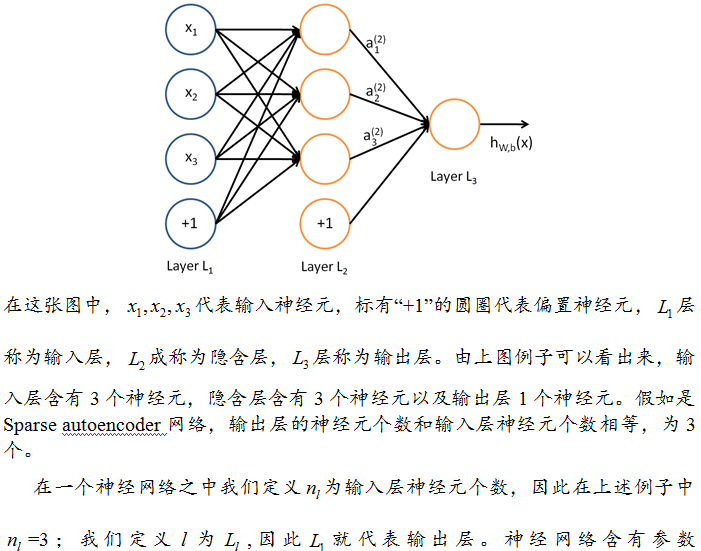

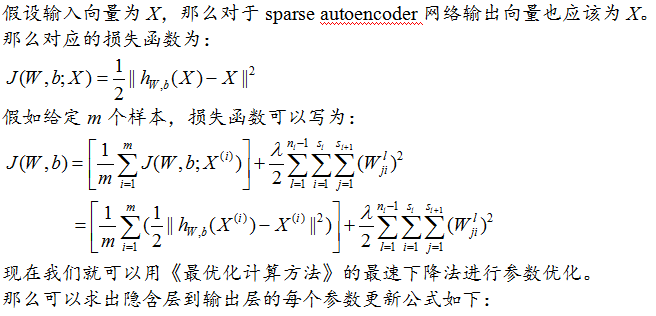

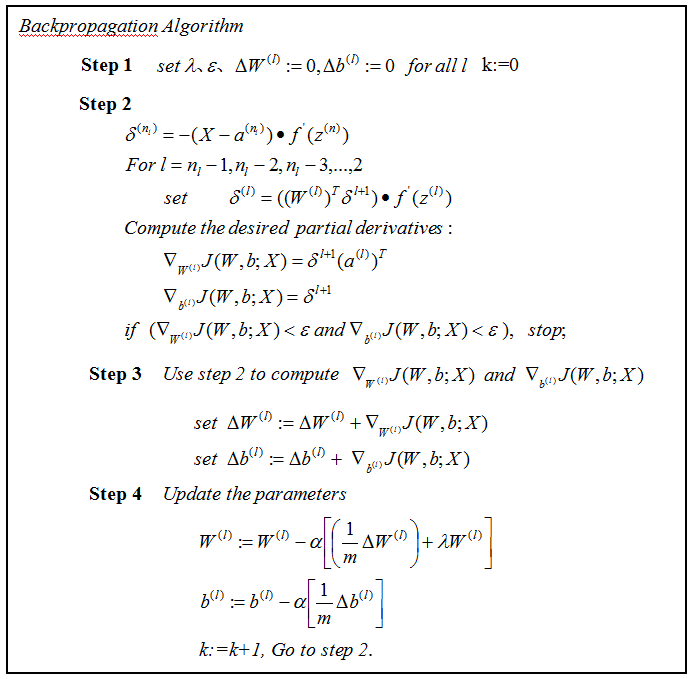
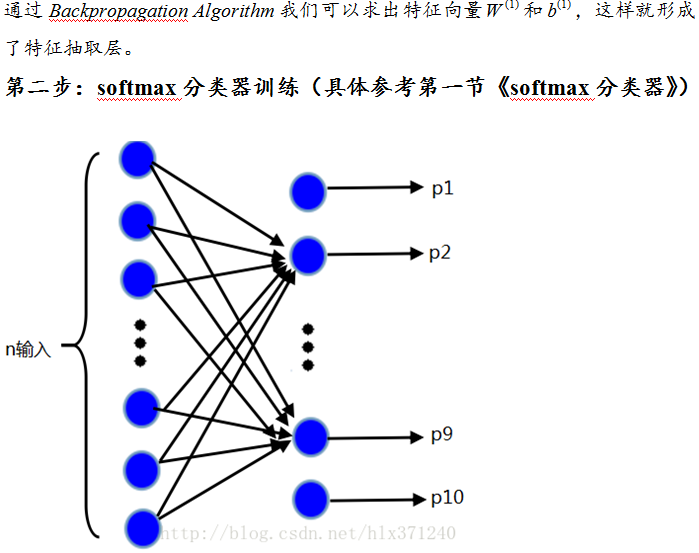

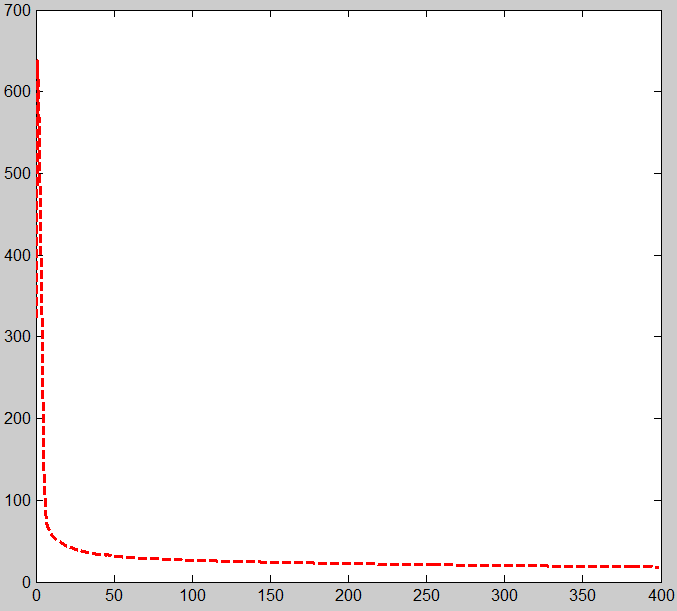














 815
815











 被折叠的 条评论
为什么被折叠?
被折叠的 条评论
为什么被折叠?








